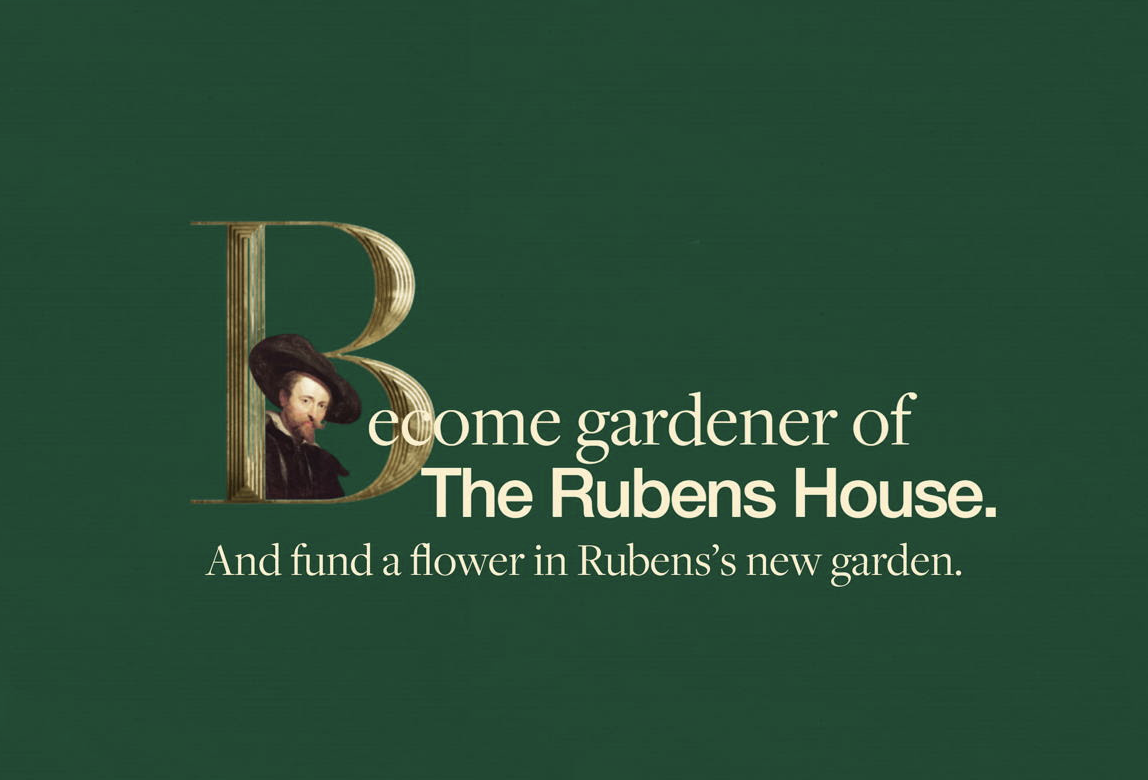365 Days of Colour in the New Garden of the Rubens House

This autumn, work will commence on the new garden of the Rubens House. A new museum gallery, albeit one without a ceiling, is set to be added to the master’s house.
This autumn, work will commence on the new garden of the Rubens House. A new museum gallery, albeit one without a ceiling, is set to be added to the master’s house. An opportunity to enjoy colour 365 days a year, thanks to Dries Van Noten, who helped choose a colour scheme and plant varieties for the garden. The new garden design connects the reception building in Hopland with the artist’s dwelling. Everyone can add a plant to the new garden by funding a flower. During the summer, the current garden will serve as a backdrop for several events.

This autumn, work will commence on the new garden of the Rubens House. The ‘hortus conclusus’ or enclosed garden resembles a museum gallery, albeit one without a ceiling, in the heart of the city. The corridor with deciduous trees and two arcades with vistas create an impression of denser growth, drawing the visitor’s gaze in, to the garden and the house. The new Baroque garden is a garden for all seasons, resplendent with colour 365 days a year. A total of 8,835 plants have been selected, including 39 trees, 4,170 perennials, 612 climbing plants, 3150 bulbs and stinzen plants, 346 shrubs, 438 hedge plants; 30 orangery plants and 50 water plants.
When Rubens purchased the land for the house in 1610, he relied on Willem and Jasper, his gardeners, to tend to his garden and on several other people who lived nearby to plant the garden with flowers and plants. His maid Willemyne used the fruit and vegetables as ingredients for the food that she cooked for the Rubens family. The garden of the Rubens House was a garden of the people and will remain thus in the future. To plant the new museum garden, the Rubens House, like Rubens, is counting on helping hands, who want to see the garden thrive. Everyone can help Rubens’s new garden grow. Interested parties can purchase flower bulbs, perennials, shrubs and trees for the garden of the Rubens House, starting from 10 euros.
Ecological and Sustainable
The garden was designed by Ars Horti, in collaboration with the Flanders Heritage Agency, based on new archival research, with advice from Dries Van Noten on colours and plants. The garden design takes into account sustainability, future-proofing, energy efficiency and inclusive access. Thanks to the layered vegetation, the garden becomes an ecological stepping stone in the city, mitigating higher temperatures, flooding during heavy rainfall, urban noise and large amounts of CO2 and particulate matter in the air.
The garden design is a crucial element of the master plan as it connects the artist’s dwelling with the new reception building, facilitating the changed routing. The current garden, which was planted in 1933, will be recovered as much as possible. The box hedges and perennials of the parterre will be transferred to Schoonselhof cemetery. The wood of the few pollarded lime trees that will be felled will be used to build furniture for the Rubens House. The majestic yew, which is 250 years old, will continue to watch over this exceptional garden.
Practical information
Work on the new garden is expected to start from October, at which point the current garden will close to visitors. The Rubens House will remain open up to and including 8 January 2023. Visitors are advised to book their ticket in advance.
Help the garden of the Rubens House grow. And fund a flower in Rubens’s new garden. Discover our packages on www.rubenshuis.be or www.hofleveranciervanrubens.be

